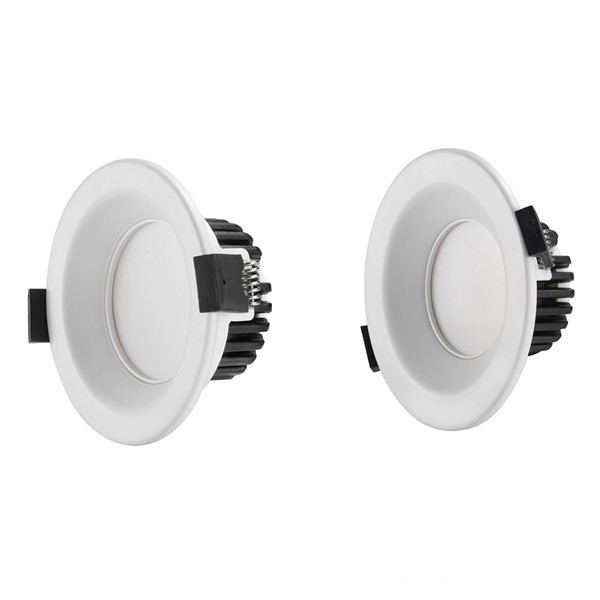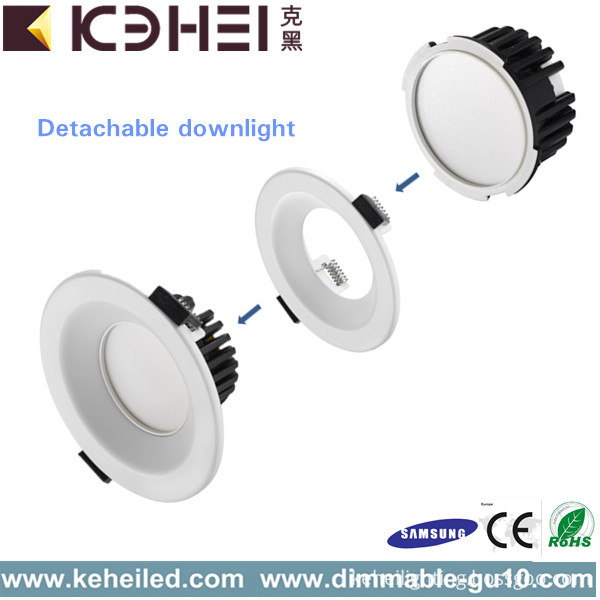Foreword Digital video technology will undoubtedly reshape the entire electronics industry. Of course, digital video technology is also making profound changes in our video experience, transmission and interaction methods. It has begun to enter our cars, computers, mobile phones and networks. However, bringing high-quality entertainment is just the beginning! In the past, engineers had very limited options when implementing digital video. Hard-wired and ASIC-based solutions always limit the future and functions of devices, and also limit their adaptability. Although the flexibility of dedicated devices is slightly higher than that of ASICs, their utility is still limited in the face of the ever-changing multimedia standards and applications. Although programmable platforms are the most flexible way to extend the service life of products, they often require huge investment in software development in order to penetrate the digital video technology market. The primary problem in embedding digital video is that the complexity of implementing video far exceeds simple image and audio compression and decompression. Digital video can take various forms and formats. Developers need to support complicated configurations and various aspects, such as: different resolutions / display sizes, different bit rates, real-time issues, and even the reliability of video sources (eg. , The difference between the video stream from the hard drive and the video stream from the wireless communication link). Even those seemingly simple and clear tasks-such as efficient management of audio / video synchronization and reliable video transmission over IP networks, can still be a headache for developers. Although some devices have overwhelmed many application developers, they have to support multiple standards, including those that must be specified. To get a glimpse of the importance of this flexibility, just think about the rapid deployment and widespread popularity of H.264 video CODEC. The main obstacle facing many engineers is the lack of a digital video development platform with sufficient performance, low cost, high enough flexibility, and easy access. For engineers who want to integrate video in new applications, low-cost off-the-shelf video subsystems must be used to reduce the complexity of video design. And with the DaVinci technology of Texas Instruments (TI), all the problems can be solved easily! What is DaVinci technology DaVinci technology is a new platform for digital image, video, voice, and audio signal processing. Once launched, it is warmly welcomed, and application development based on it is endless. The technology is a rich connotation complex, including DaVinci processor, software, development environment, algorithm library and other technical support. Because of the wide range of technologies involved, there is a relatively high technical threshold. Successful implementation of digital video requires the latest advances in four major elements: processors, development tools, software, and system expertise. Because digital video, audio, voice, and voice technologies can be implemented in a platform that integrates these four elements, DaVinci technology can lay the foundation for the current transformation of digital video. DaVinci technology takes full advantage of TI ’s 25 years of digital signal processing and integrated circuit expertise to provide a system-on-chip (SoC) that is carefully optimized for flexible digital video implementation, has industry-leading performance, and integrates Programmable digital signal processor (DSP) core, ARM processor and video acceleration coprocessor. With efficient processing power, memory, I / O bandwidth, balanced internal interconnection, and dedicated peripheral combinations, SoCs based on DaVinci technology can provide ideal core power for video applications at the lowest cost. The processor itself can only be used as the basis for digital video solutions. Managing all components of a digital video system is an extremely complex engineering problem. For many applications, digital video is just one of the many components of a more complex system. Gone are the days when engineers arbitrarily invested a lot of time and money in what they consider to be basic technology. In order to allow developers to overcome the initial obstacles and accelerate the time to market, it is no longer enough to simply develop and implement the basic chips and software for digital video. Not only do developers need processors, they also need ideal code that can be put directly into production. In other words, to meet the specific needs of their applications, developers also need hardware and software that have been integrated into the configurable or easily programmable digital video subsystem. Just as the transition between assembly language and C language allows developers to fully develop more advanced functionality, DaVinci technology enables developers to get rid of the specific technical details of digital video. Now, developers no longer need to know the details of the implementation of specific CODEC engines (eg: MPEG-2, H.263, WMA9) in their video applications. Using APIs that allow developers to use the ideal CODEC without modifying the upper application code, we can significantly simplify the specific low-level details of video CODEC processing. Getting rid of CODEC is an important step in the widespread popularization of digital video. When developers can build on the functionality previously developed, innovation has come to them. For example, when developing electronic devices in the past, even the most basic functions required engineers to perform gate layout. For many years, TI and other companies have been committed to integrating functions in silicon chips, laying the foundation for devices that exceed their functional expectations, while also reducing the amount of engineering required to achieve the desired goals. For example, due to the provision of a computing engine that significantly speeds up signal processing tasks, the advent of DSP has driven decades of technological innovation. Using DaVinci technology, TI can once again achieve a new level of innovation. It is the advent of DSP that brings computing acceleration, so DaVinci technology will provide application acceleration based on TI's DSP, and developers no longer need to understand the mechanisms behind various audio, video, video, and voice CODECs. For those developers who want to rely on the big tree of DSP, the opportunity still exists. However, Leonardo has made it an alternative, not a must. By providing software that can be put into production at any time, such as hardware drivers, manually optimized CODECs, and application codes for managing audio / video synchronization and data streams in the network, DaVinci technology enables developers to achieve first-class without understanding how to program DSPs Video features. Open platform development using DaVinci technology The complexity of digital video systems is mainly due to the many components that developers must create and manage. Writing code for many components and managing interactions between them will greatly increase the difficulty of integrating a complete system. DaVinci technology reduces the complexity of the system by providing an open platform on which TI and its third-party partners have developed and integrated various components required to form a digital video system. And they also integrated the hardware and software needed to enable any engineer to achieve digital video innovation. The effectiveness of the open platform is beyond doubt. For example, the open development platform of the PC market has triggered an explosive growth of innovative applications that are being re-enacted. TI's OMAP platform environment has taken mobile phone application development to a new level-through the integration of hardware and software, software developers can still use existing systems and concentrate on developing new markets and new sources of income, such as development texts Information transmission, ringtone download, and other advanced applications in mobile phones. DaVinci technology integrates the OMAP environment concept into a wide range of digital video applications. At the chip level, TI ’s accumulated expertise and historical experience in video products enable it to develop highly optimized coprocessors and development tools to expand its chip-based DSP technology capabilities. However, developers do not have to worry about the details of how to program and optimize code for their basic innovations. DaVinci technology leverages these innovations through a combination of simpler and easier-to-use standard APIs-these APIs allow for easy use of codecs that can be put into production at any time, allowing developers to focus on developing those that maximize added value The product comes up. The open development platform provided by DaVinci technology also expands applications. DaVinci software will initially support Linux and will support other operating systems in the future. The content supported by Linux includes peripheral drivers, real-time application management, application-level APIs, and code ready for production. The combination of carefully optimized video-based integrated DSP, dedicated development tools, tuning driver, CODEC, and system-level application code enables developers to implement a complete and complex digital video system, which can be provided with only a few function calls Codec function. The world is changing, and the availability of digital video off-the-shelf will definitely enable and inspire new applications that we have never heard of. However, innovation will only be possible if engineers concentrate on developing new ideas for using existing technology without having to bother with those useless repetitive developments. DaVinci technology has realized the complex details behind digital video. All engineers have to do is easily bring low-cost digital video to the consumer market.
2.5 Inch LED Downlights can be detachable in two parts. The module and 2.5 Inch size rings.
For the 2.5 Inch LED Downlights' module, it can be do for 5W and 9W. That is, for the size of 2.5 Inch LED Downlights, we can do 5W and 9W.
Black color for module. White, black, silver color for ring. Color temperature (CCT): 2600-2700K, 2800-3200K, 3800-4200K, 5000K-5500K, 6000-6500K.
AC100-240V. 50Hz. With Philips / Lifud / Go-color / Leipo driver.
For the 2.5 Inch downlights, inner diameter is 75mm. Outer diameter is 95mm. Height is 50mm. It can be embed into 75-110mm cut out hole size.
High CRI, hight PF, 5W cool white flux can be reach 494lm. 120° beam angle.
Dimmable or Non-dimmable function are available.
2.5 Inch Led Downlights 2.5 Inch LED Downlights, 3000K 2.5 Inch LED Downlights, 5W 2.5 Inch LED Downlights, White 2.5 Inch LED Downlights SHENZHEN KEHEI LIGHTING TECHNOLOGY CO.LTD , https://www.keheiled.com
